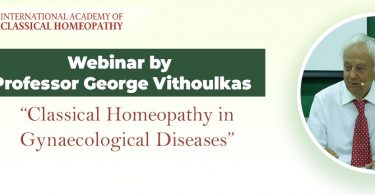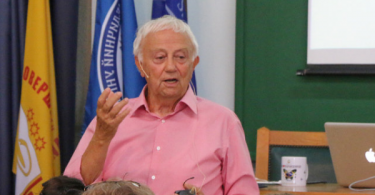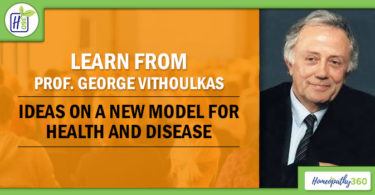
Early life
Dr. James Tyler Kent was born on 31st March 1849 in the town of Woodhull, New York, USA. His father was Stephen Kent and mother Caroline Tyler. Kent did his primary schooling from Franklin Academy, Prattsburg and higher education from Madison College, New York where he obtained his degree in Bachelor of Philosophy (Ph. B) in 1868. He obtained his M.A. degree in 1870 from Bellevue Medical College. He finally completed his medical studies from Institute of Eclectic Medicine, in Cincinnati, Ohio in 1874 and got his licence to practice medicine. Teachings at Eclectic schools of the time used to include anatomy, histology, physiology and various therapies like allopathic, homoeopathy, naturopathy and chiropractic etc. Kent got married to Ellen L., his first wife at 26 years of age and started practising in St. Louis, Missouri in 1874. Fame followed his hard work and soon he became leading member of National Association of Eclectic Medicine. In 1877, Kent joined as Professor of Anatomy at American College of St. Louis. Kent married second time here to Lucia.
A converted Homoeopath
Being a student and practitioner of Eclectic system, Kent was never much impressed with idea of Homoeopathic treatment and he had only superficial knowledge about it. Around 1878, the turning point came into his life when his second wife, Lucia suffered from persistent insomnia along with weakness, asthenia and anaemia resistant to any form of available treatment given by Kent and his colleagues. On his wife’s persistent request Kent finally agreed to consult a Homoeopath, Dr. Richard Phelan. After an hour of consultation and case taking, Dr. Phelan asked Kent to bring a glass of water and he put few tiny globules in it and advised Kent to give her a teaspoonful every two hourly until she falls asleep. After two doses, Kent got absorbed in preparing his lectures and remembered only after four hours to return to her room where he finds his wife sleeping peacefully. Phelan continued her treatment and she gradually improved under his treatment.
Impressed and stirred by the idea of radical cure under Homoeopathy he started studying Hahnemann’s Organon of Medicine under the guidance of Dr. Phelan. He studied day and night and voraciously read whatever he found published on Homoeopathy in America. Thereafter, he first resigned from the position of Professor of Anatomy and then from membership of National Association of Eclectic Medicine and converted himself completely to Homoeopathy.
An abstract philosopher
The physician inside Kent kindled again and he started practising medicine again. This time following what he had learned from Dr. Phelan and what he had learned by himself. Fame followed him again and he was given the position of Professor of Anatomy and Surgery in 1881 in Homoeopathic College of Missouri where he served for two years. He replaced Dr. Uhlmeyer on his retirement in Department of Materia Medica in 1883. Later, he left this college to join as a Dean at Homoeopathic Medical School of Philadelphia. Kent got opportunity to serve as President of International Hahnemann Association in 1887.
Kent was very much influenced by Emanuel Swedenborg, a Swedish Christian theologist and philosopher. Kent started reading and adopting his philosophy and implemented them in background in reading Homoeopathy, finding simillimum and treating patients. Philosophy of Swedenborg gave Kent a beyond ordinary approach to look at the cases and treat them. It is said that both Eclectic and Swedenborgian philosophy had very significant influence on Kent’s writings and practice.
Kent’s Lectures on Homoeopathic Philosophy published in 1900 clearly depicts his deeper philosophical understanding to Hahnemann’s Homoeopathy teachings. In this work, Kent provides a practical approach to treat patients with philosophical understanding in background. During his class lectures on Homoeopathic philosophy, he used to keep Hahnemann’s Organon on the desk and use to lecture for more than an hour on smallest of topics of Organon.
An eloquent speaker
After some years of practice and teaching in Philadelphia, Kent relocated The Post-Graduate School to Chicago under the auspices of Dunham Medical College and joined there as Dean. And then at age of 56 years, he became Dean at Hering Medical College. He also taught at Hahnemann Medical College at the same time. Around this time only, Kent married his third wife Dr. Clara Louise Toby who was his long-treated patient. She was also a practising physician. Her attentive nature gave Kent a great companionship in his upcoming masterworks like Lectures on Homoeopathic Materia Medica and Repertory of Homoeopathic Materia Medica.
Kent’s lectures on Materia Medica were first published in his journal, Journal of Homoepathics in 1899.Later these lectures were published in book form in 1905. During his class lectures on Homoeopathic Materia Medica, he used to keep open one of the ten volumes of Hering’s Guiding Symptoms on desk and use to bring out of it a live presentation and picture of the drug for listeners. He used to point out all the characteristics of the remedy, its prescribing angles and its comparisons with other drugs. Kent always emphasized on forming a “drug picture”from bulk of unrelated symptoms, which he suggested a very effective way to study Materia Medica and hence to practice also.
A successful clinician
Kent’s stay in Chicago were his golden years. His teachings and practising skills were at its peak. He ran a clinic in Chicago where he used to teach medical specialists how to analyse and chose significant symptoms from a case. In Post-graduate School of Homoeopathics, Philadelphia only he and his disciples saw more than 18,800 patients in 1896 and 16,000 in 1897. Kent trained 30 physicians here who later became the torch bearers in Homoeopathic movements in early 20th century in America and Europe. Kent left no stone unturned in teaching and treating patients. He saw patients at clinics, visited their home and even consulted patients over letters and telegrams. Kent proved 28 different remedies on himself and his pupils.
Kent was famous for his “constitutional prescriptions”. Influenced by Swedenborg, he gave prime importance to “will and understanding” of the patient. According to him, a person gets diseased when his will or understanding is altered. And hence to treat “constitutionally”, he meant to treat patients based on the symptoms primarily of will and understanding. Kent referred these symptoms as “General Symptoms”. At times, when most of the prescribers limited themselves to mother tinctures and lower potencies, Kent gave the concept of using higher potencies like 1M, 10M, 50M and CM. Use of higher dilutions brought criticism to Kent from different Homoeopaths but a larger number of Homoeopaths were convinced by his successful treatment and they started to follow him and his method of perception.
Kent was editor of following journals: The Homoeopathic Courier in St. Louis from 1881-1882, Journal of Homoeopathics in Philadelphia from 1897-1899 and The Homoeopathicians in Chicago from 1912-1916. Kent was member at various societies namely: The Homoeopathic Medical Society of Illinois, The International Hahnemannian Association, The American Institute of Homoeopathy and his self-founded Society of Homoeopathicians. He was honorary member of the British Homoeopathy Society.
Later life
Kent worked relentlessly throughout his life for Homoeopathy. Till his last breath he was working on preparing a comprehensive repertory which would help the physicians. Kent was inspired by Lippe’s work. Lippe suggested Kent on working with Lee who also had the same intention and zeal as Kent. After Lee lost his eyesight, Kent took on this daunting task for himself and completed the work with his pupils which was finally published as Repertory of the Homoeopathic Materia Medica in 1897 at Philadelphia.
Kent was suffering from catarrhal bronchitis for months. In his zeal to serve humanity through Homoeopathy, he was working day and night and continued to neglect his health. To take a break, Kent visited his countryside home in Sunnyside Orchard, near Stevensville in Montana, USA where his catarrhal bronchitis turned into Bright’s disease and after two weeks of illness he passed away on 6th June, 1916.
Kent was probably the only stalwart after Hahnemann who influenced the practice, writings and teaching of Homoeopathy which has come across the limitations of time and location and has single handedly paved the way for many more stalwarts to come forward and practice Hahnemann’s way of Homoeopathy.
About the Author:
Prof. (Dr.) Subhas Singh1, Dr. Vignesh K.2, Dr. Niharika Shaw2, Dr. Dinesh Sura2
- Director, National Institute of Homoeopathy, Kolkata
- Postgraduate scholar, National Institute of Homoeopathy, Kolkata





